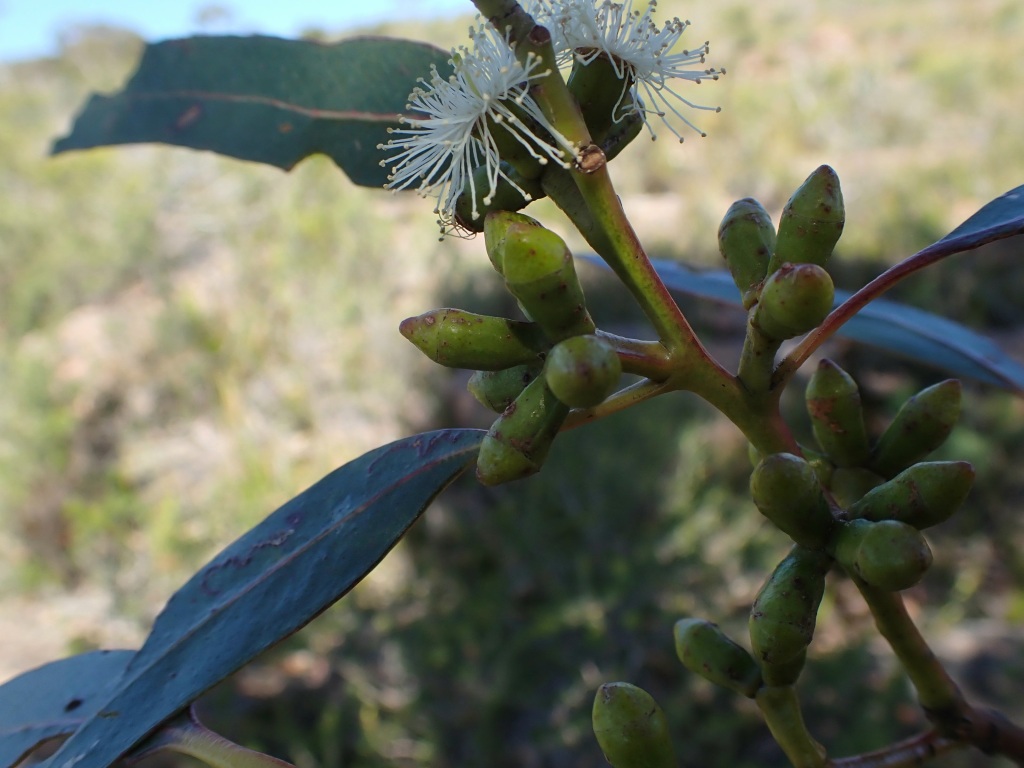Eucalyptus alaticaulis
R.J.Watson & LadigesTree or mallee to c. 20 m tall; bark rough on lower part of main stems, fibrous, thin, grey, usually persistent. Juvenile leaves sessile or shortly petioleate, opposite for many pairs, broadly lanceolate to ovate, to 14 cm long, 9 cm wide, discolorous, glossy, green above; adult leaves petiolate, alternate, lanceolate, 12–30 cm long, (1.5–)2–4.5 cm wide, concolorous, dark green, slightly glossy, reticulation dense, with numerous island and intersectional oil glands. Inflorescences axillary, unbranched; peduncles flattened, to 2.4 cm long, 7-flowered; buds subsessile to shortly pedicellate, cylindric with conical operculum, angle often continuing from pedicel along hypanthium, to c. 1 cm long, 0.5 cm diam., scar present; stamens irregularly flexed; anthers oblong; ovules in 4 vertical rows; flowers white. Fruit sessile or pedicellate, cylindric to truncate-ovoid, to 1 cm long, 0.9 cm diam.; disc descending; valves 3, rim level or below; seed dark brownish-black, flattened-ellipsoid, shallowly reticulate, hilum ventral.
Gold, GGr, DunT. Apparently endemic to dry rocky slopes in the Grampian Ranges.
Previously included in Eucalyptus cypellocarpa (see note under E. litoralis), but distinguished by its shorter size, persistent rough bark, and relatively broader juvenile leaves. Eucalyptus alaticaulis also has a close affinity with E. goniocalyx (see note under that species).
 Spinning
Spinning